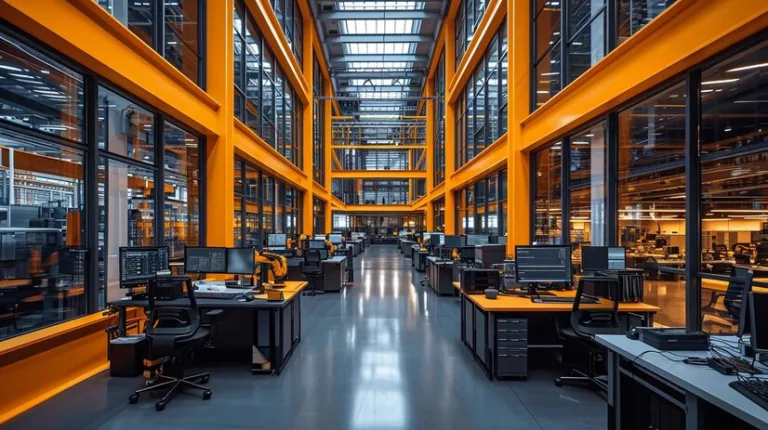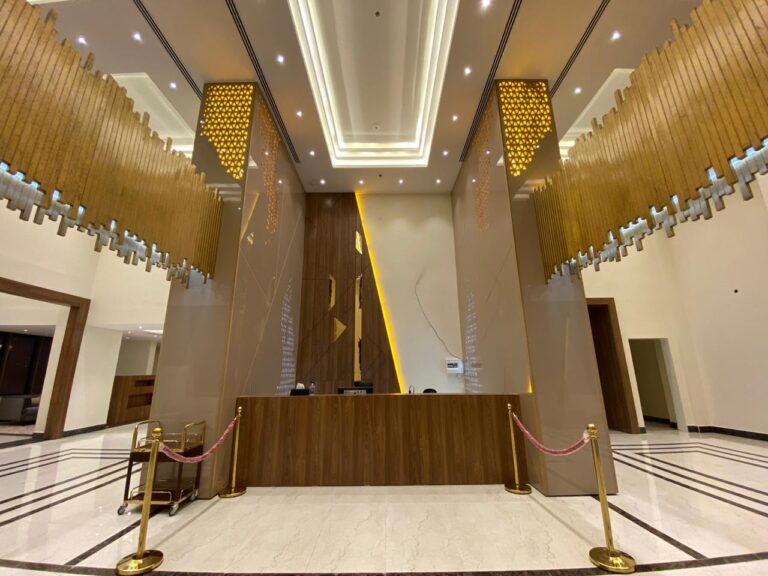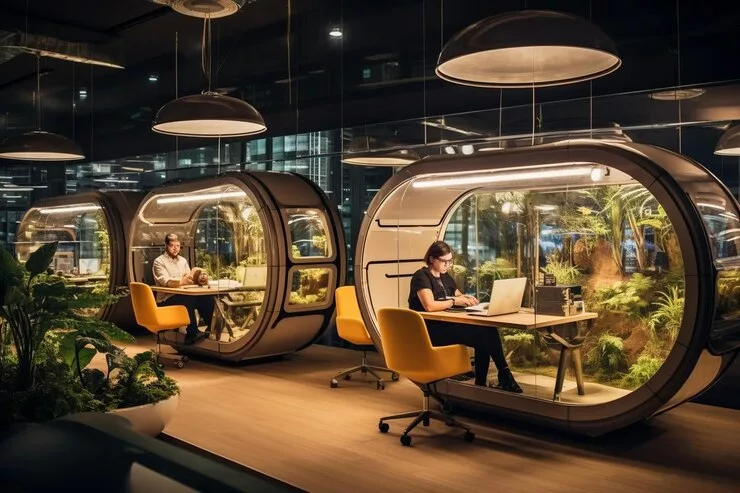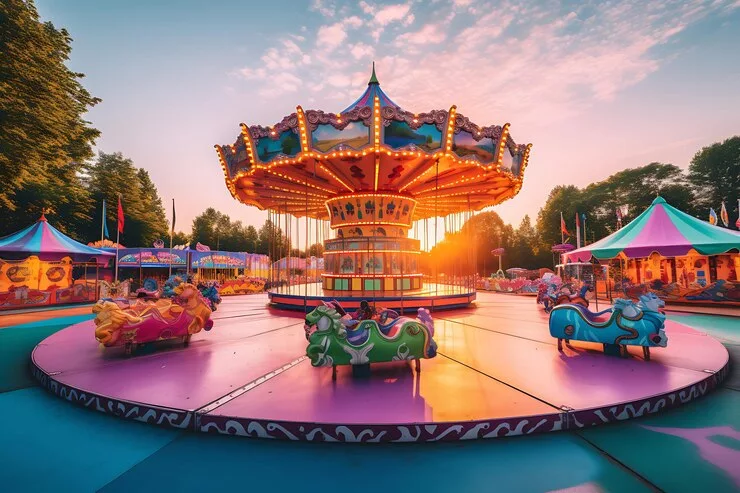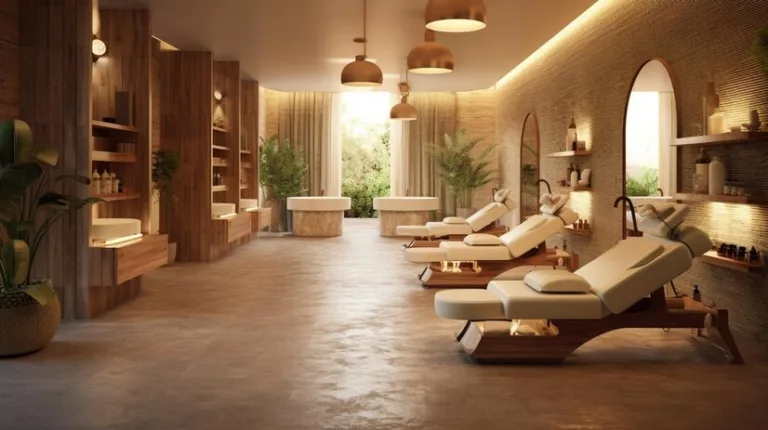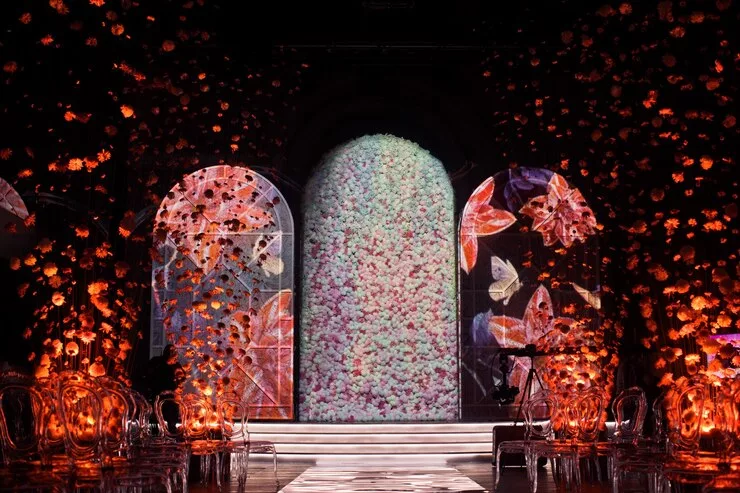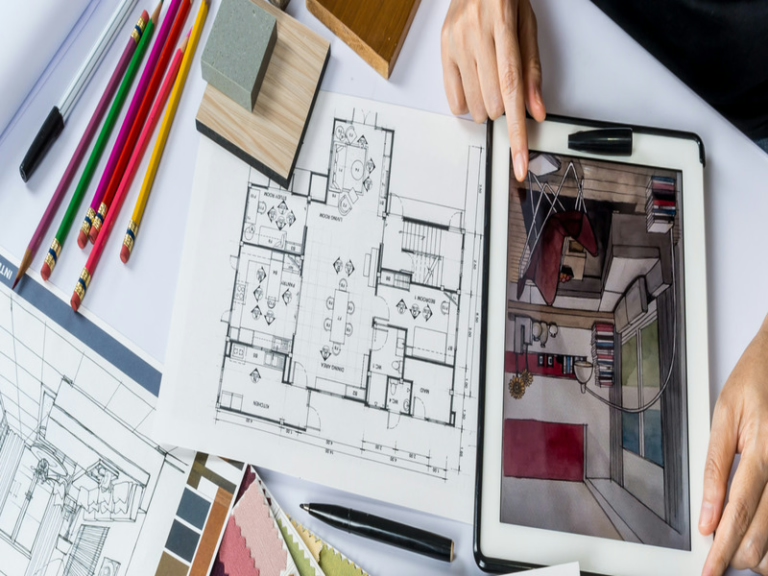Government agency interior design plays a vital role in developing modern work environments. It’s not only about aesthetics but also about enhancing efficiency and expressing the identity of the official institution.
At Vera Interior, led by designer Diaa Gamal, we provide comprehensive design solutions inspired by Salmani architecture, combining authenticity with innovation.
Start your project with Vera Interior today and elevate your government institution to a new level of professionalism and excellence that perfectly reflects its corporate image.
The Importance of Interior Design in Enhancing Government Work Environments
Government agency interior design plays a pivotal role in creating an effective and comfortable work environment that boosts productivity and fosters a strong sense of professional belonging among employees. Good design goes beyond visual appeal—it includes the strategic allocation of space to facilitate communication between departments, stimulate creativity, and provide both mental and physical comfort for staff. Choosing the right colors and incorporating natural lighting also helps improve overall mood and reduce workplace stress.
At Vera Interior, under the supervision of designer Diaa Gamal, modern design concepts are applied that respect the identity of each government agency and the nature of its services while maintaining the formal tone and institutional prestige. By integrating Salmani architecture as both an aesthetic and functional foundation, Vera Interior transforms administrative spaces into fully integrated work environments that reflect professionalism and organizational pride, making it the ideal choice for any government entity seeking excellence in workplace design.
Read More: 10 Comfortable Chairs Perfect for Small Spaces
Modern Trends in Government Agency Interior Design
Government agency interior design has undergone a significant transformation in recent years, moving towards more modern and human-centered concepts that focus on improving work environments and enhancing efficiency and performance quality. Government offices are no longer merely rigid functional spaces; they have become contemporary areas that embody institutional values and reflect national identity in a sophisticated and progressive manner.
Among the most prominent modern trends in government interior design are open-plan spaces that enhance employee communication, the use of natural lighting to reduce energy consumption and improve overall mood, and the integration of smart technologies to facilitate daily operations and boost efficiency. There is also a growing emphasis on sustainable materials and design elements inspired by Salmani architecture, which combines authenticity with elegance.
At Vera Interior, led by designer Diaa Gamal, these modern trends are applied innovatively, balancing aesthetics, functionality, and institutional identity. The result is government offices transformed into contemporary work environments that reflect the spirit of development and a bold national vision.
Read More: 5 Innovative Hospital Interior Design Ideas
How Interior Design Reflects the Identity and Values of a Government Agency
Government agency interior design serves as a strategic tool that embodies the identity of the official institution and reflects its values to both employees and visitors. Every detail within the space—from colors and materials to lighting layout and furniture—conveys the organization’s message and administrative character. For example, government agencies focused on innovation tend to adopt modern, open designs that encourage communication and creativity, while agencies with an executive or operational focus prefer more formal and structured designs that convey precision and responsibility.
Key Elements of Successful Government Office Interior Design
The success of government agency interior design depends on achieving a precise balance between functional aesthetics and operational efficiency, ensuring a comfortable work environment that enhances productivity and reflects the professionalism of the institution. Key elements include:
- Smart space planning: Arranging offices and corridors to facilitate movement and communication between departments without congestion.
- Careful color selection: Using calm and harmonious colors that stimulate focus and reflect the agency’s identity.
- Natural and artificial lighting: Providing eye-friendly lighting that contributes to improved mood and productivity.
- Comfortable functional furniture: Choosing pieces that combine comfort and durability while maintaining a formal tone.
- Integration of technology and smart environments: Implementing modern control systems for lighting and temperature to streamline work and reduce waste.
- Aesthetic touches inspired by national identity: Incorporating motifs inspired by Salmani architecture to add authenticity to the space.
Read more: The Best Decoration Company in Riyadh
Sustainable and Smart Interior Design Solutions for Government Buildings
Government agency interior design is witnessing a significant shift towards embracing sustainability and smart technology, aiming to create work environments that are both efficient and eco-friendly. Sustainable solutions focus on using environmentally friendly materials, such as reclaimed natural wood and low-emission paints, reducing the building’s carbon footprint.
From a technological perspective, smart control systems for lighting, temperature, and air quality enable highly efficient energy management while providing employees with a comfortable and productive work experience. Architectural designs that integrate natural lighting and indoor green spaces also contribute to enhancing creativity and improving overall quality of life in the workplace.
At Vera Interior, under the supervision of designer Diaa Gamal, the latest sustainable and smart design concepts are applied in government projects, achieving the perfect balance between functionality, aesthetics, and environmental responsibility. Each project becomes a benchmark in innovation and sustainability.
Best Interior Design Riyadh Services
Steps to Designing an Efficient and Elegant Government Agency Office
Government agency interior design is a meticulous process that requires a balance between administrative functionality and architectural elegance, ensuring a work environment that reflects the professionalism of the government institution and motivates employee productivity. Key steps include:
- Assessing institutional needs: The first step involves understanding the nature of the organization’s work and the number of employees to allocate spaces efficiently.
- Smart space planning: Designing reception areas, executive offices, and meeting rooms to facilitate workflow while ensuring privacy.
- Selecting appropriate colors and materials: Using neutral and elegant colors that promote confidence and calmness, along with high-quality materials that reflect the institution’s identity.
- Utilizing natural lighting and smart systems: Incorporating natural light and integrating smart control solutions to enhance efficiency and reduce energy consumption.
- Highlighting institutional identity: Integrating the government agency’s logo and values into interior design details in a sophisticated and balanced manner.
At Vera Interior, under the supervision of designer Diaa Gamal, we ensure government agency interior design that combines elegance, efficiency, and a distinctive institutional identity.
Interior Design and Decoration Implementation
Why Professional Government Agency Interior Design Improves Productivity and Image
Professional government agency interior design contributes to enhancing productivity and institutional image by creating a balanced work environment that combines comfort, efficiency, and visual identity. Thoughtful design goes beyond aesthetics; it includes space planning that supports collaboration and reduces stress, alongside the use of colors and lighting that boost focus and creativity among employees.
Modernly designed government offices also reflect the professionalism of the institution to visitors and partners, enhancing public trust and highlighting its institutional status. In this context, Vera Interior, led by designer Diaa Gamal, offers innovative interior design solutions for government agencies, combining functionality and elegance to create environments that embody the organization’s values and effectively support its objectives.
Case Studies: Innovative Government Interior Design Projects Around the UAE
In the UAE, Vera Interior, under the supervision of designer Diaa Gamal, has delivered innovative government agency interior design projects that strike a balance between modernity and national identity. Key features of these projects include:
- Enhancing work environments through smart space planning that boosts employee productivity and fosters collaboration.
- Integrating Emirati heritage elements in a contemporary style that preserves visual identity while adding a sense of luxury to the agency.
- Utilizing smart technologies such as interactive lighting systems and climate control to improve operational efficiency.
- Relying on sustainable materials to reduce energy consumption and support the UAE’s sustainability vision.
- Designing luxurious reception areas that reflect the professionalism of the institution and leave a strong impression on visitors.
These successful projects confirm that Vera Interior is the ideal choice for any government agency seeking interior design that combines aesthetics, functionality, and institutional excellence.
How Vera Interior Design Delivers Excellence in Government Agency Interiors
Vera Interior Design, led by designer Diaa Gamal, offers an exceptional approach to government agency interior design by combining innovation, luxury, and practical functionality. The company follows an integrated design methodology that starts with studying the government agency’s identity and objectives, and continues through creating spaces that reflect its values and enhance the work environment.
Vera Interior focuses on fine details such as lighting distribution, selection of premium materials, and color coordination to convey formality and professionalism. Smart technologies are also employed to achieve the highest levels of operational efficiency and sustainability.
With its creative vision inspired by Salmani architecture and participation in major events like INDEX Riyadh, Vera Interior has established itself as one of the leading interior design firms in Saudi Arabia and the UAE, catering to government agencies seeking sophisticated work environments that reflect their institutional status.
In conclusion, the uniqueness of Vera Interior Design, led by designer Diaa Gamal, demonstrates that government agency interior design can seamlessly combine luxury, efficiency, and sustainability. By blending creativity with institutional identity, the company delivers innovative solutions that enhance work environments and elevate the agency’s image for both employees and visitors. If you are seeking sophisticated design that truly reflects your organization’s values, Vera Interior is your ideal choice.
Frequently Asked Questions About Government Agency Interior Design
What is the importance of interior design for government agencies?
Government agency interior design contributes to improving the work environment and increasing productivity. It also reflects the identity of the official institution and enhances its image for both visitors and employees.
What advantages does Vera Interior offer in government interior design?
Vera Interior, led by designer Diaa Gamal, excels in delivering luxurious design solutions that combine authenticity and innovation, inspired by Salmani architecture, while ensuring efficiency and sustainability.
How long does it take to complete an interior design project for government agencies?
The timeline varies depending on the size and nature of the project, but Vera Interior adheres to precise execution plans that balance quality and speed.
Effective interior design in government workspaces is crucial for promoting efficiency and productivity among employees. Well-designed spaces can enhance employee well-being and overall work performance.
Significance of creating efficient work environments
Creating efficient work environments in government workspaces is crucial for optimizing productivity and employee satisfaction. Well-designed spaces can streamline workflow and foster a conducive atmosphere for focused work.
Benefits of well-designed government workspaces
Well-designed government workspaces can improve employee morale, foster creativity, enhance collaboration, and boost overall productivity. They can also attract top talent and showcase the agency’s commitment to excellence.
Functionality and Ergonomics in Government Workspaces
Incorporating ergonomic furniture and layout is crucial in government workspaces to promote employee comfort and health. Designing functional spaces can enhance efficiency and productivity among government employees.
Incorporating ergonomic furniture and layout
Government workspaces benefit from ergonomic furniture and layouts designed to promote comfort and prevent strain. Adjustable desks and supportive chairs improve employee well-being and productivity.
Creating spaces that promote productivity and well-being
Government workspaces designed to promote productivity and well-being incorporate natural lighting, indoor plants, and comfortable break areas. These elements enhance employee morale and overall well-being in the workplace.
Aesthetics and Branding in Government Workspaces
Design elements in government workspaces should reflect agency values. Utilizing colors and branding enhances aesthetics, creating a cohesive and professional environment that aligns with the organization’s image.
Design elements that reflect government agency values
Government agency values can be reflected in design elements by incorporating symbols, logos, and colors that represent the organization’s mission and identity. This creates a sense of unity and pride.
Utilizing colors and branding to enhance workspace aesthetics
Incorporating the government agency’s colors and branding into the workspace design can create a cohesive and professional atmosphere. This enhances the overall aesthetics and reinforces the organization’s identity and values.
Technology Integration in Government Workspaces
Incorporating smart technology enhances efficiency. It streamlines tasks and improves communication. A seamless digital experience for employees fosters a more productive work environment.
Incorporating smart technology for efficiency
Government workspaces can benefit from integrating smart technology. Automating tasks, enhancing communication, and improving workflow efficiency are key advantages of incorporating advanced technology solutions.
Creating a seamless digital experience for employees
Government workspaces can enhance employee experience by integrating digital tools like cloud storage, project management software, and video conferencing platforms. This streamlines communication and collaboration, improving overall efficiency.
Sustainability and Green Design in Government Workspaces
Utilizing eco-friendly materials such as recycled furniture and energy-efficient lighting can reduce the carbon footprint of government workspaces. Green design practices contribute to a healthier environment for employees and visitors.
Utilizing eco-friendly materials and practices
Government workspaces can benefit from utilizing eco-friendly materials like recycled furniture and energy-efficient lighting. Incorporating sustainable practices reduces carbon footprint and promotes environmental responsibility.
Benefits of sustainable design for government buildings
Sustainable design for government buildings offers cost savings on energy bills. It reduces environmental impact and promotes a healthier indoor environment for employees and visitors.
Conclusion
In conclusion, designing effective government workspaces is crucial for promoting productivity and well-being among employees. Future trends may focus on enhancing technology integration and sustainability practices.
Key takeaways for designing effective government workspaces
Designing effective government workspaces requires a focus on functionality, ergonomics, aesthetics, technology integration, and sustainability. These elements contribute to improving productivity, employee well-being, and overall workplace efficiency.
Future trends in interior design for government offices
As government offices move towards the future, trends in interior design include flexible workspaces, biophilic design elements, emphasis on sustainability, and integration of advanced technology for enhanced productivity and efficiency.
